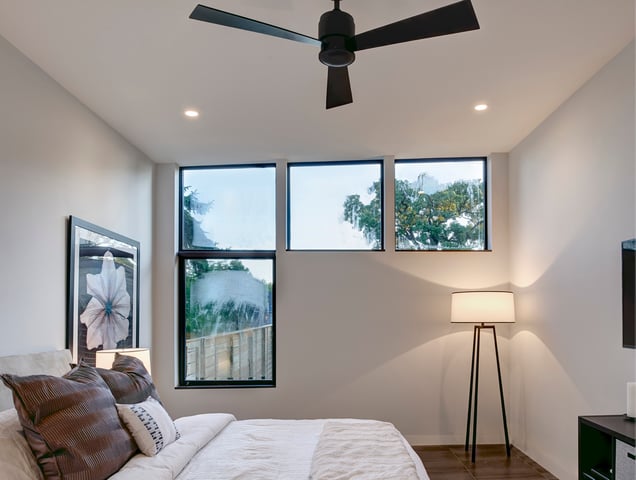Inflation Reduction Act: Incentives for Building Owners

The Inflation Reduction Act (IRA) is the most comprehensive response to climate change to date. Signed into law on August 16, 2022, the legislation invests $369 billion into climate-related provisions and creates a path toward significantly reducing carbon emissions.
The Act will likely accelerate sustainable development. Along with investments in the clean energy sector, the IRA provides direct consumer incentives for investing in energy-efficient technologies. For a building owner, this is an unprecedented opportunity to reduce your carbon footprint and lower your energy costs.
We aim to help building owners identify and take advantage of any incentives or funding opportunities. This article will discuss some of the tax deductions, credits, and grants available to building owners, helping you determine if any apply to your project.
Incentives for Commercial Building Owners
The IRA offers many tax incentives to help commercial building owners lower their Energy Use Intensity (EUI) and invest in green technology.
Specifically, the Act expands the existing 179D tax deduction for energy-efficient commercial buildings. Projects with an EUI 25% better than the current ASHRAE 90.1 baseline can deduct $2.50 per square foot. The amount increases with further EUI decreases, capping out at $5.00 per square foot for a 50% EUI improvement.
The expanded 179D tax deduction also incentivizes the sustainable redevelopment of existing buildings. Retrofitted buildings can compare with previous performance numbers rather than the current 90.1 EUI baseline.
Along with the 179D tax deduction, the IRA extends the existing Energy Investment Tax Credit. Building owners can receive a tax credit for up to 30% of investment in qualifying renewable energy properties, including:
- Solar power
- Fiber optic solar power
- Fuel cells
- Waste energy recovery properties
- Microturbines
- Combined heat and power
- Geothermal heat pumps
Tax credits are based on the type of investment. For example, investing in solar power yields a higher percentage than investing in geothermal heat pumps.
Under the IRA, building owners can also receive credits for new technology, including:
- Energy storage
- Microgrid controllers
- Linear generators
- Dynamic glass
- Biogas property
- Interconnection property
Keep in mind that these incentives can include additional provisions. In situations where the Act provides “bonus rates,” building owners must ensure contractors, subcontractors, and mechanics are paid prevailing wages during the construction.
Incentives for Residential Developers and Homeowners
The IRA also expands tax credits for residential projects. Before the new law, housing developers could claim a $2,000 tax credit per dwelling unit for homes meeting the 2004 International Conservation Code.
Under the IRA, developers can now claim $2,500 per unit for homes meeting the ENERGY STAR New Home requirements and $5,000 per unit for meeting the US Department of Energy’s specifications for Zero Energy Ready Homes.
Large multifamily developments also qualify if prevailing wage requirements are met, and unlike current tax provisions, developers can claim these credits while also claiming Low-Income Housing credits.
Tax credits also extend to homeowners. Currently, homeowners can receive tax credits for improvements like:
- Installing energy-efficient exterior windows, doors, and skylights
- Improving insulation
- Installing energy-efficient heating and cooling systems
The IRA expands the current tax credit program to provide homeowners up to $1,200 annually with no lifetime limit. Homeowners can even receive up to $2,000 in tax credits for installing a heat pump.
If tax credits are not incentive enough, these home improvements provide the added benefit of significantly reducing energy costs.

Homeowners can receive tax credits for features like energy-efficient windows.
Grants for Municipalities and Nonprofits
Lastly, the IRA provides local governments and nonprofits with access to block grants aimed to improve environmental conditions in disadvantaged communities.
These grants cover activities like:
- Air-quality monitoring and improvements
- Indoor air quality improvements
- Mitigation of urban heat islands, extreme heat, wood heater emissions, and wildfire events
- Climate change resilience
The goal is to engage and strengthen communities most vulnerable to the effects of climate change. Additionally, the Act offers apprentice programs that train people to work in green technology and related fields, creating job opportunities.
Learn More About Building Project Funding
The Inflation Reduction Act will likely impact the architecture and construction industry by accelerating ongoing sustainability efforts. It incentivizes commercial building owners, residential developers, and homeowners to invest in energy-efficient technologies and reduce carbon emissions. At the same time, it provides grants to help communities respond to the climate crisis.
Costs are a top concern for anyone taking on a building project, but such incentives make investments in sustainable design more accessible. Your architect should guide you through the process by identifying available incentives and providing necessary documentation.
Along with the incentives offered through the IRA, there are many other funding opportunities available for a building project. Explore your options by reading about Tax Incremental Financing and federal historic tax credits.